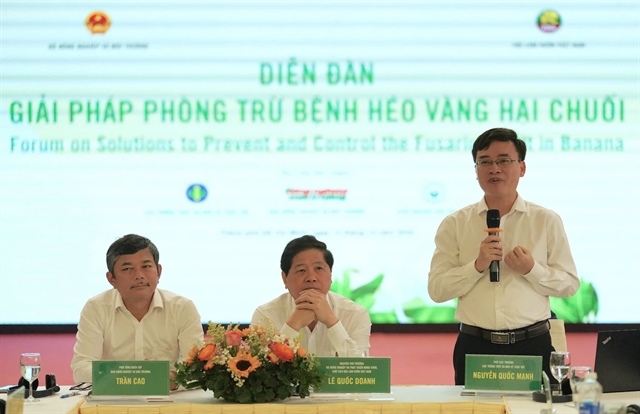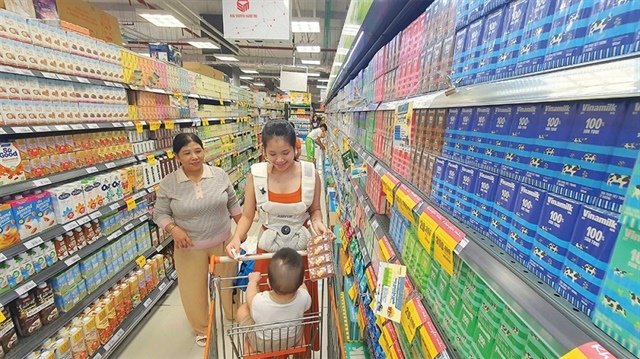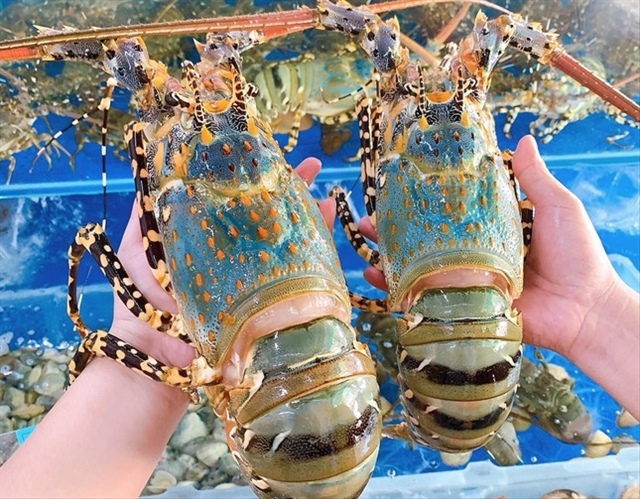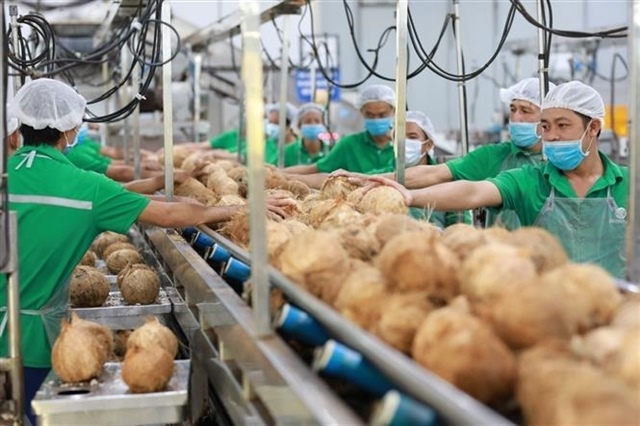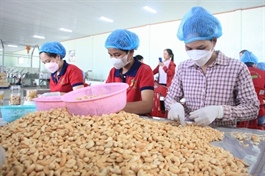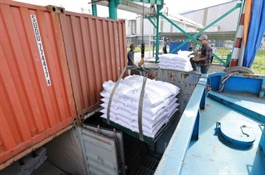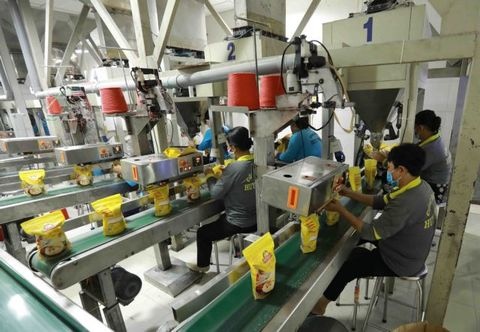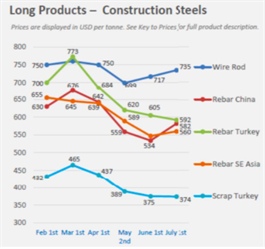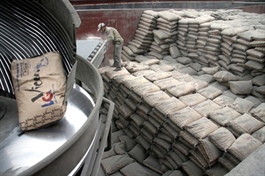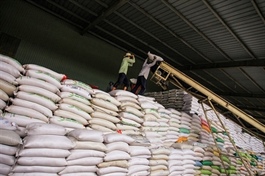Vietnamese farmers eager to expand rice planting amid India’s export ban
Vietnamese farmers eager to expand rice planting amid India’s export ban
Rice farmers in Vietnam’s Mekong Delta region were said to be in a buoyant mood and plan to increase production, as export rice prices are expected to keep surging following India’s ban on rice shipments to curb domestic inflation.
Nguyen Thi Tien, a rice farmer in Soc Trang Province, harvested a bumper crop of summer-fall rice thanks to early planting and favorable weather conditions, with total output exceeding 12 metric tons.
Traders rushed to pay deposits and purchased her rice at VND6,500 (US$0.27) per kilogram, enabling her to earn some VND60 million ($2,530) in profits, Tien revealed.
Prices of many fertilizers have dropped sharply recently, leaving input costs for rice planting lower than last year, she said, adding that export rice prices are on the rise, thereby making her family’s life better than before.
Phan Duc Minh, another farmer in An Giang Province, has switched to producing rice seedlings at home and selling them to foreign buyers for the past couple of years.
Minh, who had previously collaborated with Vietnam’s leading rice exporter Loc Troi Group in rice production and export for 18 years, planted OM380, a rice variety, on over six hectares of paddy land.
As the world’s largest rice exporter, India imposing a ban on non-basmati white rice would significantly drive up Vietnamese rice prices in the upcoming time, Minh predicted.
“This would be an opportunity for farmers like us, especially those currently applying technology to rice production,” he said.
Huynh Ngoc Nha, director of the Soc Trang Province Department of Agriculture and Rural Development, said that unhusked rice prices have stayed high so far, prompting local farmers to increase rice acreage by 1,500ha year on year to roughly 141,000ha, exceeding 1.9 percent of the province’s target.
Other provinces in the Mekong Delta have made similar moves.
In An Giang, for instance, a report of the provincial administration indicated that local farmers had planted rice seedlings on a total area of over 231,000ha in the first half of 2023.
During the summer-fall crop alone, rice seedlings were planted on a total area of 205,500ha, up six percent versus the same period last year.
Commenting on export rice prices following India’s move, Le Quoc Dien, deputy head of the Dong Thap Province Department of Agriculture and Rural Development, said local farmers remained upbeat seeing unhusked rice prices soaring day by day.
“We are studying ways to adjust rice crops," Dien said.
“Rice in the province has ripened constantly, so there are no concerns about rice shortfall or food insecurity issues.”
He forecast that some areas would be hit by drought next year, but Dong Thap would ensure an adequate rice supply for export.
Vo Hung Dung, former head of the Vietnam Chamber of Commerce and Industry chapter in Can Tho (VCCI Can Tho), underlined the need to stabilize domestic rice output and respect signed rice export contracts.
This is not the first time that India has imposed a ban on rice exports, Dung said.
The top rice exporter’s prohibition plus the recently suspended grain deal between Ukraine and Russia could continue to raise food prices and inflation in the world, he continued.
Unhusked rice prices would be back to normal after rising sharply for a while.
By that time, Vietnamese rice exporters could struggle to seek buyers to consume a huge amount of rice in the country, the former VCCI official expressed his concern.
He cited Indonesia as an example of switching to a rice buyer from an exporter, saying that policies on rice production and food security play a vital role.
Exporting rice will benefit local rice farmers, but it is not essential to significantly boost rice output and acreage, for land should not solely serve rice cultivation. It should be utilized effectively, Dung stressed.
As of July 20, when India announced the ban, Vietnam’s 5-percent broken rice sold for $533 per metric ton, $11 lower than the same variety from Thailand.
Meanwhile, Vietnam’s 25-percent broken rice was offered at $513 per metric ton, $10 higher than the Thai variety, according to data from the Vietnam Food Association.
Between July 14 and 20, Vietnam’s 5-percent and 25-percent broken rice prices rose $20 per metric ton each.
Statistics from the General Department of Vietnam Customs showed that last month Vietnam exported 618,000 metric tons of rice, worth $340 million, down 15 percent in volume and 14 percent in value month on month.
However, the country saw its outbound sales of rice during the first half of 2023 up 21 percent in volume and 32 percent in value against last year, at 4.2 million metric tons, valued at $2.2 billion.
This is the best performance of the local rice sector over the past 13 years.


